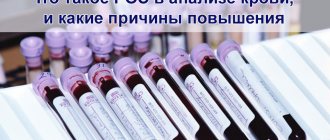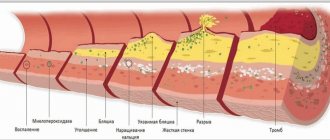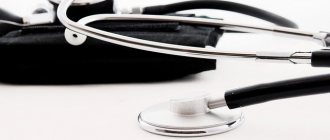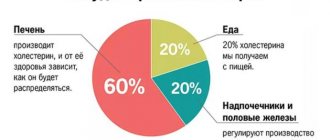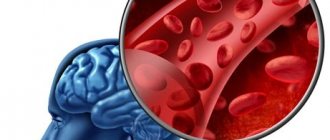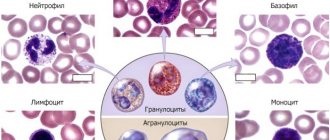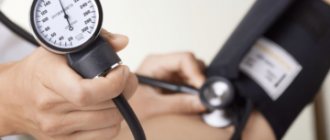In this article you will find information about what the normal heart rate is by age, in children, after physical and other activities.
The heart is a hollow muscular organ. It constantly contracts and relaxes, driving blood through the blood vessels. Thanks to this, all organs and tissues are saturated with nutrients and oxygen.
Pulse is one of the important indicators of heart condition. A normal heartbeat means that the heart is functioning well and without problems. In this article we will look at the normal pulse and blood pressure in adults and children at rest and after physical activity.
Normal blood pressure and heart rate by age in adults and children: table
Normal pulse
Usually, indicators of only an increased or decreased pulse are not regarded by a doctor as a separate pathology. Pressure is also always taken into account.
- If the pressure is normal, and the pulse indicators have slight deviations, then this is a patient’s condition that requires observation and sometimes treatment.
- If a rapid or infrequent pulse is accompanied by an increase or decrease in pressure, then it is worth assuming that the person has more serious pathologies associated with the heart and blood vessels.
Here are two tables with blood pressure and heart rate standards by age:
Normal pulse Normal pulse
At a young age, almost no one pays attention to blood pressure. But with age, when the vessels become less elastic, increased or decreased pressure becomes more noticeable. Therefore, after 40 years you need to start monitoring your pulse and blood pressure. Read more about this in the article on our website at this link .
Four flights of stairs
Before taking the test, it is important to do some physical exercise: for example, take a brisk walk. Muscles, including the heart, must be toned. After a short rest, you need to climb the 60-step staircase as quickly as possible. Usually this is 4 standard spans. You cannot break into a run while moving.
When testing, scientists measured the energy expenditure of the subjects before and immediately after the test: in metabolic equivalents (ME), which characterize the volume of oxygen.
- rise in 40–45 seconds. at a cost of 9–10 ME: the best result, an indicator of excellent cardiac health;
- rise in 1.5 minutes. with a consumption of less than 8 ME: an alarming condition in which a detailed medical examination is recommended;
- rise in more than 1.5 minutes: heart disease is present in most cases, an urgent need to see a cardiologist.
Pulse is higher than normal, increased pulse: what does this mean, what to do?
Normal pulse
In medicine, a pulse is considered above normal if the heart rate reaches more than 100 beats per minute. A high heart rate is not always dangerous - during physical training or fear, stress, it can increase, and mainly after eliminating such influences, it returns to normal.
What to do if your pulse is higher than normal? Increased heart rate - what does it mean? Here are the answers to these questions:
- In this case, there is no need to worry so as not to aggravate the situation.
- Before taking the medicine, it is better to lie down with your legs elevated.
- The room should be well ventilated and should not be stuffy.
- In this position, when the room is filled with fresh air, take a deep breath and as you exhale, straining, cough forcefully.
- If after 10-15 minutes of resting in this position there is no improvement, you should call an ambulance.
If such conditions occur frequently, it is recommended:
- Lose weight
- Remove habits that are harmful to health and life - smoking, alcohol, fatty and fried foods.
Those people who are at risk will have to follow such recommendations throughout their lives. Prevention also includes frequent walks in the fresh air. Ventilate the room at least 2-3 times a day for 10 minutes to avoid stuffiness. This will help saturate the body with oxygen and improve the functioning of the circulatory system.
Nikolay Amosov test
The creator of the artificial heart valve has proposed an even simpler ladder test that does not require outside help. You can do it on the way home.
- Before you start, you need to measure your pulse. At rest, its norms are: 60–80 beats per minute in women and 50–85 beats in men.
- Slowly walk up the stairs of the 4th floor.
- Measure your pulse again. If it doesn't exceed 100 hits, great. At 100–120 blows: satisfactory, 120–140 blows: the result is alarming. If it is more than 140, accompanied by severe shortness of breath, you must stop the test and see a doctor.
Next stage: climbing stairs for 4 minutes:
- managed to climb 15 floors: excellent;
- no more than 12 floors: good;
- 10–11 floors: something to worry about;
- 9 floors or less: time to see a doctor.
If there are no high-rise buildings nearby, you can modify the test: when you reach the top floor, go back down. In this case, descending 3 floors is equal in load to ascending 1.
What kind of doctor treats the heart and pulse?
Normal heart rate
The heart is an organ that continues its work throughout our lives. It is very important to keep him in good shape and avoid any complications with his work. Therefore, if there are any hints of problems with its operation, you should urgently contact a specialist.
- A cardiologist deals with the treatment and diagnosis of all aspects of the heart.
- If you experience any pain in this organ, you should immediately see this doctor to determine the root cause of the pathology.
If a person suffers from tachycardia (increased heart rate), then in this case, it is worth seeking a diagnosis not only from a cardiologist, but also from a therapist. In the future, you may need to consult with other doctors. It is the therapist who must give the referral. This list may include:
- Rheumatologist
- Endocrinologist
- Neurologist
- Psychotherapist
You should never delay going to the doctor. Such delays can lead to unpleasant outcomes, especially when it comes to the heart.
Remember: You should not self-diagnose or self-medicate heart disease. At the first signs of illness, it is better to immediately seek qualified help.
Signs of heart problems
Coronary heart disease can develop almost asymptomatically, occasionally causing shortness of breath. The coronary arteries supplying the myocardium narrow. Because of this, the supply of oxygen is reduced. At an advanced stage, this is a formidable pathology leading to disability or death. The number of people suffering from ischemic heart disease exceeds 120 million. Every year some of them die. Early diagnosis and timely treatment are the only way to stop the progression of the disease.
The first alarming symptoms appear when there is no heart pain yet:
- causeless swelling of the arms and legs;
- increased sweating;
- increased heart rate after moderate walking;
- periodically appearing weakness and dizziness.
The development of pathology is accompanied by regular arrhythmia, characteristic pressing pain behind the sternum, and difficulty breathing. At this stage, symptoms must be corrected by constantly taking medications. Therapy should be accompanied by a special diet and standardized physical activity.
Simple methods that identify disturbances in the blood supply and functioning of the heart muscle will help you not to be late in starting treatment. You can use them without leaving the entrance.
Squat test
Here you don’t even need a ladder; you can check your heart function at home. You will need a little more than 1 m² of free space, a stopwatch or timer. No preparation for the study is needed:
- Measure your pulse per minute while at rest. Remember the result.
- Time yourself for 30 seconds and try to do 20 squats during this time. As you lower, stretch your arms forward, and as you rise, press them to your hips.
- After finishing the exercise, immediately repeat the heart rate measurement.
- Rest for 3 minutes and measure the beat frequency again.
A comparison of three results: at rest, after exercise and after rest shows whether everything is fine with the heart:
- the pulse after squats increased to 25% and recovered to the initial result: excellent;
- the frequency increased by 25–50% after exercise, and after rest remained increased by 20–30%: the result is good, but you need to monitor your health;
- the load caused the heart rate to increase by 50–75%, after rest it remains just as high: there are violations and reasons to consult a doctor;
- The pulse fluctuates after exercise, becoming 76% higher or higher, there was not enough rest for recovery, it quickly returned to normal: diagnostics and medical assistance are urgently required.
6 Minute Walk Test
This is a stress test that allows you to assess physical performance and functionality of the cardiovascular system and respiratory organs. The 6-minute step test is usually used in patients with heart failure (CHF) who have suffered a myocardial infarction, severe pneumonia and tuberculosis, as well as in the elderly and senile. Can be performed both in a medical facility and at home.
When conducting a step test, the patient is given the task of walking as far as possible in 6 minutes along a measured (30 m) corridor marked at 1 m intervals, after which the distance traveled is recorded. Patients are allowed to stop and rest during the test; they should resume walking when deemed possible. While walking, you can encourage patients with standard phrases: for example, “Everything is going well,” “Continue at the same pace.” Before and at the end of the test, shortness of breath and pulse are assessed.
Distance traveled in 6 minutes (6MWD) is measured in meters and compared with the proper 6MWD (i). 6MWD (i) is calculated using the formulas below, which take into account age in years, body weight in kilograms, height in centimeters, body mass index (BMI).
- 6MWD (i) value for men: 7.57 x height in cm - 5.02 x age - 1.76 x body weight - 309; or 6MWD (i) = 1140 - 5.61 x BMI - 6.94 x age.
- 6MWD value for women: 2.11 x height in cm - 2.29 x weight - 5.78 x age + 667 or 6MWD (i) = 1017 - 6.24 x BMI - 5.83 x age.
For persons over 65 years of age, the proper distance of a 6-minute walk is determined according to the formulas of PL Enright (2003):
- for men: 493 + (2.2 height in cm) − (0.93 weight in kg) − (5.3 age) + 17;
- for women: 493 + (2.2 height in cm) − (0.93 weight in kg) − (5.3 age).
Normally, according to the 6-minute walk test, the subject must walk more than 551 meters. With I functional class CHF - 426-550 m, with II FC - 301-425 m, with III FC - 151-300 m, with IV FC - less than 150 meters.
At the age of 80 and with symptoms of frailty, the walking test can be made simpler - walk 6 meters in 8 seconds. If it is less, you need to adjust the doses of medications taken and carefully gradually optimize physical activity.
Orthostatic test
An available research method is the orthostatic test. When moving from a horizontal to a vertical position, the flow of blood to the right parts of the heart decreases, while the blood volume decreases by approximately 20%, and the minute volume decreases by 1–2.7 l/min. An increase in the tone of the sympathetic nervous system leads to increased heart rate and increased peripheral resistance. An orthostatic test allows you to assess tolerance to sudden changes in body position and determine autonomic reactivity.
The test is performed as follows. First you need to lie down and remain in a horizontal position for 15 minutes. After this, heart rate (HR) and blood pressure (BP) are measured. Then the subject stands up and after a minute the pulse and blood pressure are measured again. In healthy people, when performing the test, a decrease in systolic blood pressure by 5–10 mm Hg is observed. Art., and heart rate increases by an average of 17% from the original. Fitness can be assessed by changes in heart rate using the following indicators:
- A difference from 0 to 12 beats indicates good training.
- An increase in heart rate by 13-18 beats occurs in a healthy, but not trained person.
- An increase in heart rate from 18 to 25 beats indicates a lack of physical fitness.
- If the difference is more than 25 beats, then we can talk about either overwork, or a disease of the cardiovascular system or other health problems.
The functional tests listed above can be performed independently at home, which allows you to quickly determine the level of fitness of the cardiovascular and respiratory systems. If you have diseases of the heart, blood vessels, or other organs, it is necessary to conduct stress functional tests in a medical institution. Most often, this involves measuring pulse, blood pressure, respiratory rate, and recording an electrocardiogram (bicycle ergometry, treadmill test). If prescribed by a doctor, a functional test test such as stress echocardiography (ultrasound of the heart under load) can be performed to determine the functional state of the myocardium and identify hidden disorders of the blood supply to the heart muscle.
Workout plus rest
What should you do to keep your heart strong and never fail? The answer is very simple: like any muscle, it can and should be trained. This means that situations in life must constantly arise when the heart works under increased load. The common belief that this organ is most beneficial from rest is unjustified. Or rather, peace is good for a sick heart, but not for a healthy one. It should work properly every day. The easiest way is to increase physical activity.
There are many ways to train your heart. Take the stairs several floors instead of taking the elevator. Walk to the metro at a fast pace, without being tempted by the minibus. Even a little morning exercise, which includes squats, jumping, and strength exercises, will strengthen your heart. But you can see this with your own eyes if you go to the gym. Many exercise machines, which usually belong to the “cardio” group, have special devices installed that show the acceleration and deceleration of the heart rate during physical activity.
Exercises for the heart →
You can train on them, focusing not on the distance traveled, but on the heart rate, that is, setting yourself such a load so that the heart rate increases to certain values. Day by day you can increase the indicators or the time you work in this mode. Over time, the heart becomes stronger and more resilient.
You can get by without a cardio machine by going on longer and longer bike rides or climbing more and more flights of stairs.
Alternate rest and work. An important condition for training the heart is to give it a break. Only then will his efforts be “fixed” in the form of an increase and strengthening of muscle fibers. If the loads follow one after another, the heart will not have the opportunity to recover and will not strengthen, but will exhaust itself. Therefore, it is so important not only to fully relax after each “muscular assault,” but also to alternate days of intense muscle work with days of rest. It would seem that it’s easy to do this: no matter what, we know how to relax.
However, here you need to follow the 1:1 rule, that is, strict alternation of such cycles and their approximately equal duration. If your vacation lasts, for example, two days instead of the required one, then you will need twice as much effort to catch up. What can we say about a week of rest from training! Iron regularity of classes should become your principle. Natural breaks, which are dictated by the need to refrain from training in the midst of critical days, should be accompanied by increased load a week after the break.
Learn to control yourself. Just like physical stress, emotional stress is also necessary for the heart. Unfortunately, we are not able to regulate most of them: their alternation and duration are dictated by life itself. However, if you feel that you have had enough negative emotions, then be sure to give yourself an emotional release: go dancing, visit, or at worst, just allow yourself to cry or scold your offenders out loud. Nothing destroys the heart more than prolonged exposure to stress that is not expressed emotionally in any way. In the midst of positive emotions, it’s also good to take a break, just be alone.
